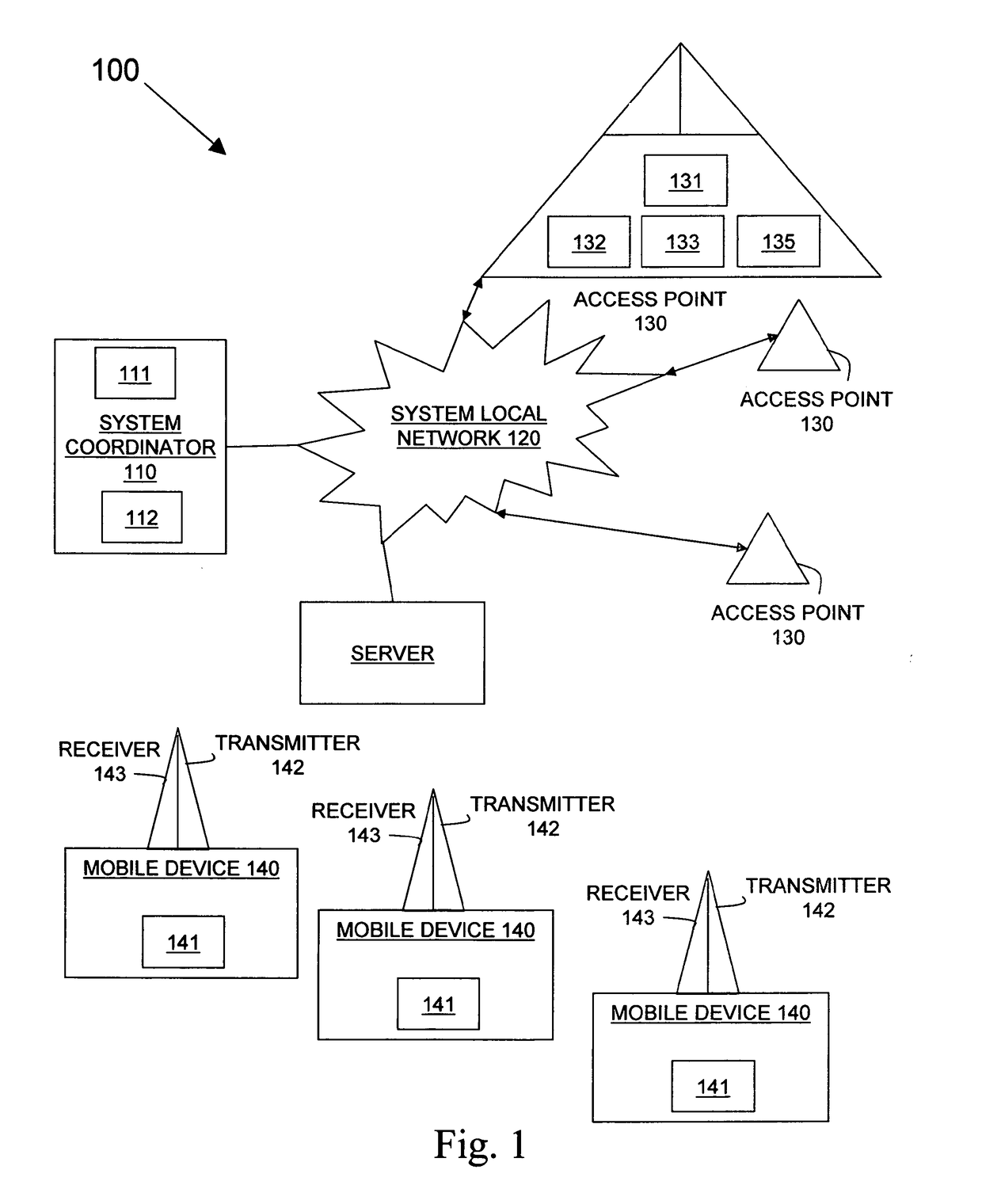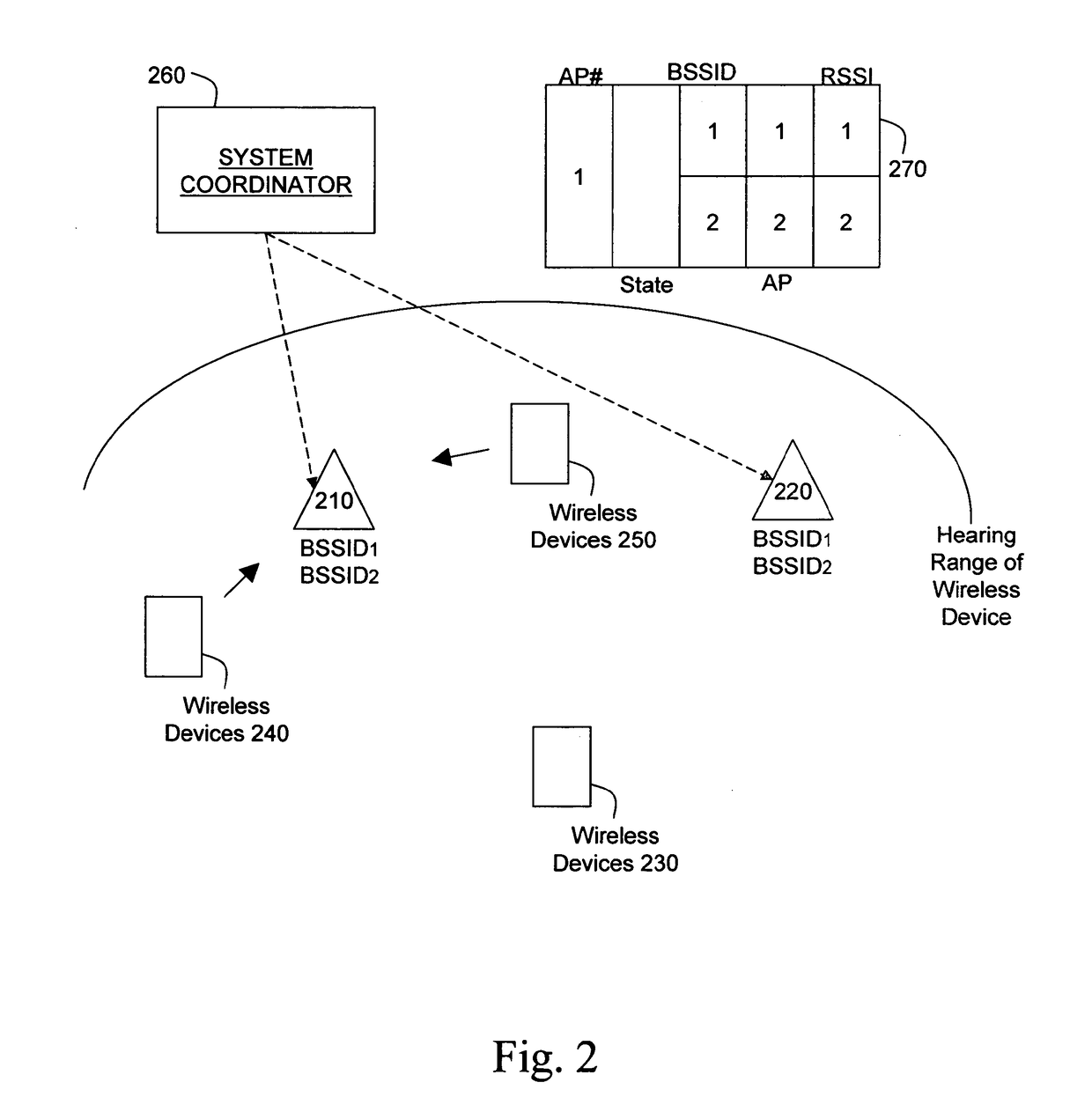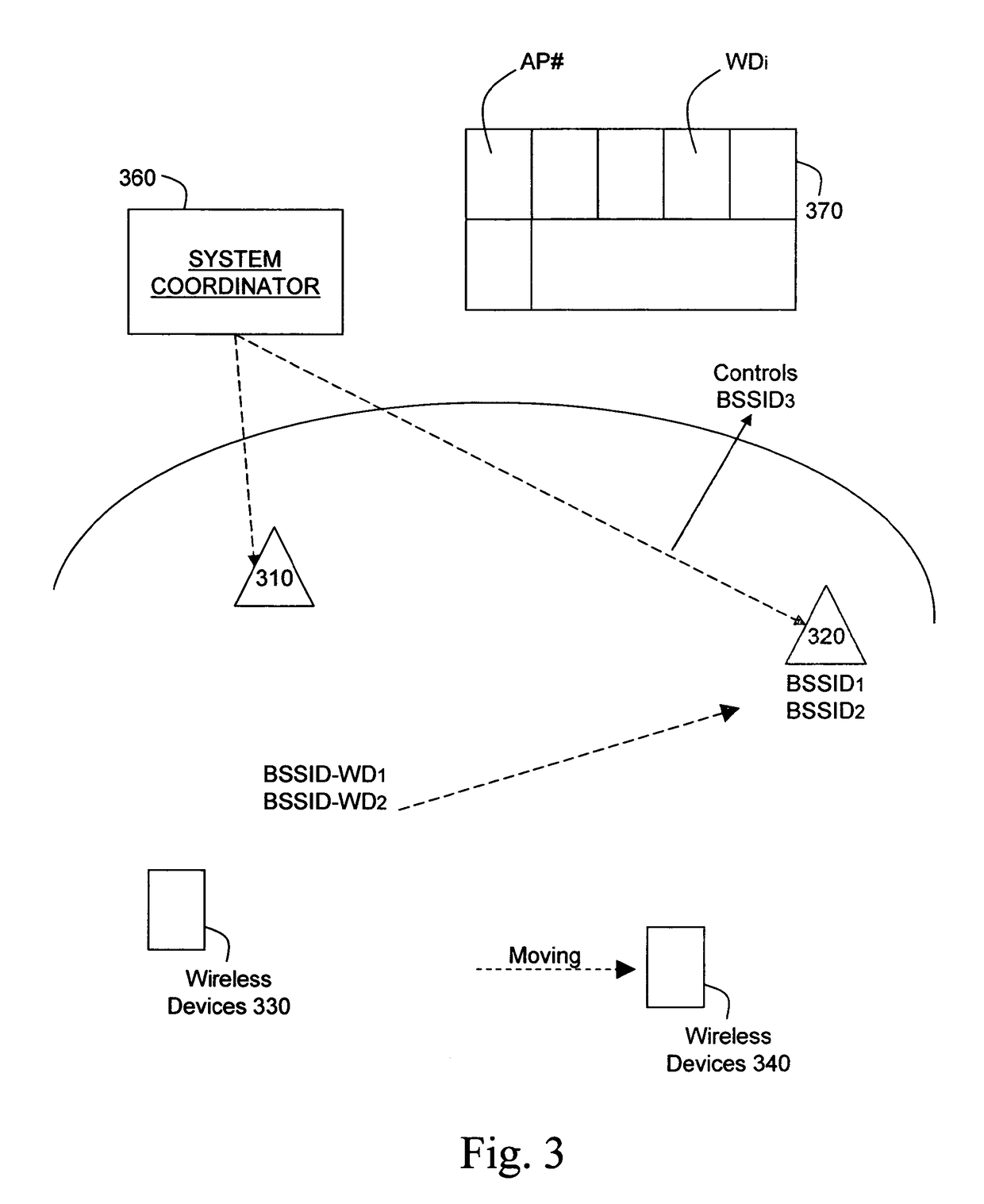Seamless mobility in wireless networks
a wireless network and wireless technology, applied in the field of seamless mobility in wireless networks, can solve the problems of not giving the wireless device any effective choice, and the wireless device cannot tell which ap it is communicating
- Summary
- Abstract
- Description
- Claims
- Application Information
AI Technical Summary
Benefits of technology
Problems solved by technology
Method used
Image
Examples
Embodiment Construction
Generality of the Description
[0026]This application should be read in the most general possible form. This includes, without limitation, the following:
[0027]References to specific structures or techniques include alternative and more general structures or techniques, especially when discussing aspects of the invention, or how the invention might be made or used.
[0028]References to “preferred” structures or techniques generally mean that the inventors contemplate using those structures or techniques, and think they are best for the intended application. This does not exclude other structures or techniques for the invention, and does not mean that those structures or techniques would be preferred in all circum-stances.
[0029]References to 1st reasons for using particular structures or techniques do not preclude other reasons or other structures or techniques, even if completely contrary, where circumstances would indicate that the 1st reasons and structures or techniques are not as com...
PUM
 Login to View More
Login to View More Abstract
Description
Claims
Application Information
 Login to View More
Login to View More - R&D
- Intellectual Property
- Life Sciences
- Materials
- Tech Scout
- Unparalleled Data Quality
- Higher Quality Content
- 60% Fewer Hallucinations
Browse by: Latest US Patents, China's latest patents, Technical Efficacy Thesaurus, Application Domain, Technology Topic, Popular Technical Reports.
© 2025 PatSnap. All rights reserved.Legal|Privacy policy|Modern Slavery Act Transparency Statement|Sitemap|About US| Contact US: help@patsnap.com



